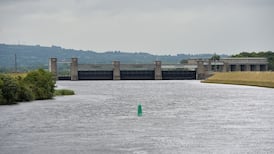Almost 500,000 people in the State are served by ‘at-risk’ water supplies which need to be urgently addressed by Uisce Éireann, the Environmental Protection Agency (EPA) has said.
While public water is safe to drink for the vast majority of people, the agency’s drinking water report for 2024, published on Wednesday, shows there were 45 supplies serving 497,000 people on the at-risk list – down from 57 supplies (serving 561,000 people) in 2023.
The quality of Irish drinking water from public supplies remains very high, with more than 99.8 per cent of samples compliant with bacterial and chemical standards, but Uisce Éireann must ensure the supply network is more resilient, the EPA said.
It acknowledges progress but warns moves “to protect public health by removing lead from our supply networks and houses is still far too slow”.
READ MORE
The legal limit for lead in drinking water will halve in 2036 (from 10 micrograms per litre (ugl) to 5ug/l) – “so much greater focus is needed by Government Departments and Uisce Éireann to remove lead from the supply network and public buildings”.
It also highlights a problem of persistent levels of toxic trihalomethanes (THMs), which has been repeatedly highlighted by the EU. THM limits were exceeded in 31 supplies, compared to 41 in 2023, while pesticide limits were exceeded in 23 supplies – the same as 2023.
Complete upgrades of supplies on the at risk list are needed to address issues with THMs and the parasite cryptosporidium, which can make people ill, “without delay”, it says.
The report highlights storms in late 2024 and early 2025 resulted in significant disruption to supplies. Boil water notices were required due to the impacts of Storm Bert; Storm Darragh and Storm Eowyn in successive months. They caused power outages at treatment plants, resulting in water treatment processes being compromised, while extreme rainfall caused high turbidity – making water murky – with some plants unable to adequately treat water, the EPA notes.
The EPA acknowledges a reduction “long-term boil water notices” in 2024, down by a third to 33.
Uisce Éireann said the report confirms public drinking water supplies meet “exceptionally high standards”.
This reflected sustained investment and operational improvements across the country with more than €1.3 billion invested in 2024 by the utility in upgrading water and wastewater treatment plants and networks, “enhancing resilience and safety for communities”, it said.
“We operate over 700 water treatment plants and are committed to delivering transformative water services that enable communities to thrive. The EPA’s report recognises our progress in monitoring, testing, and safeguarding water quality,” said drinking water compliance senior manager Dr Patrick O’Sullivan.
“Where risks are identified, we act swiftly – issuing temporary boil water notices or ‘do not consume’ notices to protect public health,” he added.
“While improved incident detection and escalation protocols – highlighted by the EPA as a positive development – may result in the earlier activation of boil water notices, the sharp decline in both the number and population affected in 2024 demonstrates real progress in infrastructure resilience and risk management across the public water supply network.”
Notices issued in 2024 was approximately half that of 2023. Over the year 37 notices were lifted, restoring safe water to 91,929 people. Only five long-term notices remained in place at the end of 2024, and over 72 per cent of boil water notices imposed in 2024 were rectified within 30 days, he said.
Uisce Éireann also made strides in addressing risks identified on the EPA’s remedial action list (RAL), he said. In 2024, works were completed at 14 supplies on the list to ensure they met the EPA standards. As a result there were 45 supplies on the list at the end of 2024, down from 57 in 2023.
Key infrastructure projects included upgrades at Clara/Ferbane, Nenagh, and Thurles, with works also completed at Saggart reservoir in North Co Dublin and Windmill Hill in Meath to improve resilience and security of supply. The national disinfection programme saw a further 27 sites upgraded in 2024, bringing to 405 the number of plants at which disinfection works have now been completed.
Dr O’Sullivan said the utility recognises the need to increase the resilience and security of water supplies. A drinking water safety plan team was assessing risk at all its water treatment plants and networks.
“Our National Operations Management Centre is now monitoring alarms at 517 of our water treatment plants, covering a population of approximately 3.8 million people. Initiatives such as these enable us to protect public health by quickly identifying and rectifying any significant issues with water quality when they arise,” he said.












